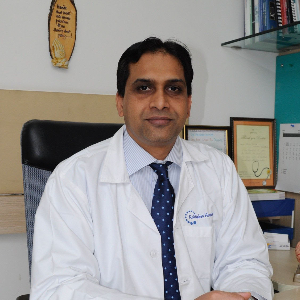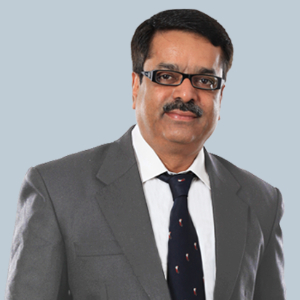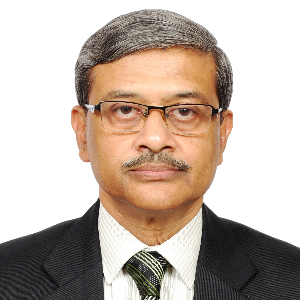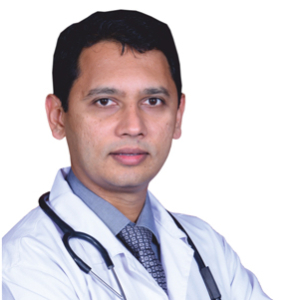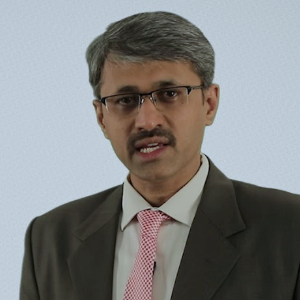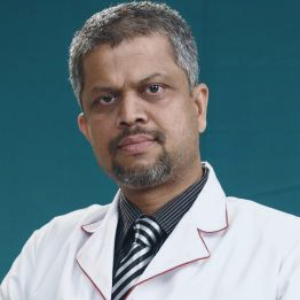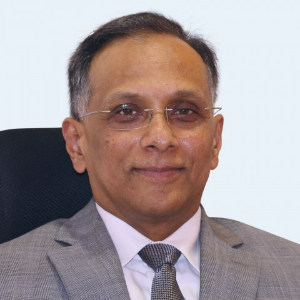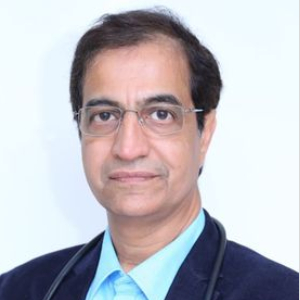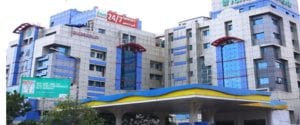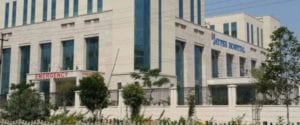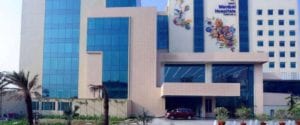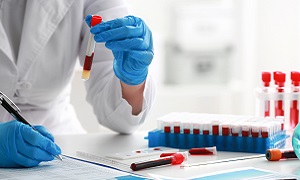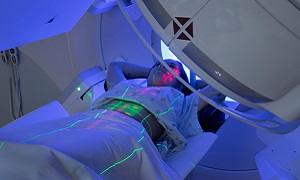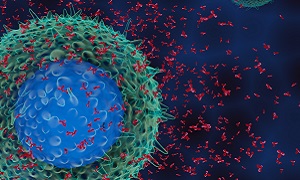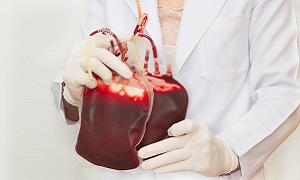Best Doctors in India for Neuroblastoma Treatment
- Neuro Surgeon & Spine Surgeon, Mumbai, India
- Over 26 years’ experience
Profile Highlights:
- Dr. Abhaya Kumar is a leading name in the field of Neurosurgery who is an expert in Minimally Invasive Spine Surgery, Brain surgery, and Stereotactic Radiosurgery and has performed more than 1400 spine surgeries and 1100 brain surgeries in KDAH alone.
- Dr. Abhaya Kumar’s primary focus includes Minimally Invasive Spine Surgery (MISS) and has handled over 800 MISS cases till date in the hospital with 96% successful results.
- Neurosurgeon, Mumbai, India
- Over 25 years’ experience
Profile Highlights:
- Dr. Ashok Hande is a renowned neurosurgeon in Mumbai who holds the credit for 300 AVMs, 1400 skull base tumor surgeries, 3600 surgeries for cranial and spinal trauma, 1200 lumbar prolapsed intervertebral disc surgeries, 800 cerebral aneurysms, and more than 100 microvascular decompressions.
- He holds an experience encompassing 25+ years and holds the credit for pioneering neurosurgery in Mumbai by bringing in new and advanced neurosurgical procedures for brain and spine surgery.
- Neurosurgeon, Mumbai, India
- Over 28 years’ experience
Profile Highlights:
- Dr. Deepu Banerji is a leading name in the field of Neurosurgery in India and possesses extensive skills in minimally invasive and micro neurosurgery.
- He has been practicing neurosurgery for over 28 years and is counted among the best microscopic neurosurgeons in the country.
- Apart from minimally invasive surgeries, his expertise lies in skull base surgery, brain tumors surgery, vascular surgery, and spine surgeries, and has handled numerous cases of brain and spine diseases and disorders.
- Neurosurgeon, Chennai, India
- Over 35 years’ experience
Profile Highlights:
- Dr. K Sridhar is a renowned Neurosurgeon who has an experience of 35+ years in brain and spine surgery and has performed over 1000 complex brain tumor surgeries.
- His primary area of interest is skull base surgery, micro neurosurgery, and spine surgery, and is currently working on lesions of the brain stem.
- Neurosurgeon, Bengaluru, India
- Over 22 years’ experience
Profile Highlights:
- Dr. Madhusudan H V is an expert Neurosurgeon in South India with 22+ years of experience in neuro and spine surgery.
- With a specialization in minimally invasive neurosurgeries, Dr. Madhusudan holds the credit for more than 7000 neurosurgeries. He also finds interest in endoscopic interventions and frameless navigations.
- Neurosurgeon & Spine Surgeon, Bengaluru, India
- Over 20 years’ experience
Profile Highlights:
- Dr. Prahraj S S is a leading Neurosurgeon who specializes in all types of neurological surgeries and has performed over 6000 neurosurgeries till date along with complex cranial and spine surgeries.
- He is one of the most renowned neurosurgeons in the country and has provided his services to some of the premier medical institutes in India such as NIMHANS where he performed a large number of spinal surgeries.
- Neurosurgeon & Spine Surgeon, Bengaluru, India
- Over 15 years’ experience
Profile Highlights:
- Dr. Praveen K S is a highly qualified neurosurgeon with over a decade of experience in handling all kinds of neurological diseases and disorders.
- He specializes in Pediatric Neurosurgery, Neuro-Oncology, Endoscopic neurosurgery, Aneurysms, and Neuro- Trauma and has performed over 4000 neurosurgeries in his career.
- Neurosurgeon & Spine Surgeon, Mumbai, India
- Over 20 years’ experience
Profile Highlights:
- Dr. Rahul Modgi is a highly established neuro and spine surgeon in Mumbai specializing in all types of brain and spine surgeries.
- Dr. Rahul Modgi’s name has been recorded in the Limca Book of Records in 2014 when he removed the heaviest iron rod from the brain of a 17-year-old patient. He has also performed various other risky surgeries for which he has greatly appreciated.
- Neurosurgeon, Bengaluru, India
- Over 30 years’ experience
Profile Highlights:
- Dr. Rajakumar V Deshpande is a renowned Neurosurgeon in Bengaluru. He performed the first pedicle screw fixation surgery for a spine injury in Bangalore.
- Dr. D V Rajakumar specializes in endoscopic neurosurgeries and has performed some of the most complex brain and spine surgeries through the endoscopic approach. His other areas of interest include minimally invasive neuro surgeries, management of cerebrovascular diseases, and brain tumor surgeries.
- Stroke Specialist & Neurologist, Mumbai, India
- Over 30 years’ experience
Profile Highlights:
- Dr. Shirish M Hastak is one of the best Stroke Specialists in India with a specialization in Neurology.
- Dr. Hastak underwent training in stroke management under world-renowned neuroscientist, Dr. Vladimir Hachinski at the Western University of Canada.
- He holds more than 30 years of experience as a neurologist among which he has spent 2 decades mastering stroke management.
Best Hospitals in India for Neuroblastoma Treatment
Fortis Escorts Hospital, New Delhi
- City: New Delhi, India
Hospital Highlights:
- Over the last 33 years, the Fortis Escorts Heart Institute has set new standards in cardiac treatment with groundbreaking research. It is now known around the world as a centre of expertise for Cardiac Bypass Surgery, Interventional Cardiology, Non-invasive Cardiology, Paediatric Cardiology, and Paediatric Cardiac Surgery.
- The hospital has cutting-edge laboratories that perform a wide range of diagnostic tests in Nuclear Medicine, Radiology, Biochemistry, Haematology, Transfusion Medicine, and Microbiology.
- Fortis Escorts Heart Institute boasts a diverse group of bright and experienced doctors who are backed up by a team of highly qualified, experienced, and devoted support professionals as well as cutting-edge equipment such as the recently installed Dual CT Scan.
- Approximately 200 cardiac doctors and 1600 personnel currently collaborate to manage over 14,500 admissions and 7,200 emergency situations each year. The hospital now has a 310-bed infrastructure, as well as five cath labs and a slew of other world-class amenities.
Rela Hospital, Chennai
- City: Chennai, India
Hospital Highlights:
- RIMC is a multi-specialty hospital in a sprawling area of 36 acres located in Chromepet, Chennai, Tamil Nadu, India.
- The facility has 450 beds including 130 critical care beds, 9 operating rooms, modern reference laboratories and radiology services, and is conveniently located near road, rail and air transportation.
- RIMC is led and managed by world-renowned physicians committed to healthcare.
- RIMC offers the broadest range of clinical care, education, and research. The hospital offers state-of-the-art technology and modern treatment facilities designed to provide health care at an affordable cost.
- Rela Institute is driven by patient needs, comfort and confidence.
CARE Hospitals, Hyderabad
- City: Hyderabad, India
Hospital Highlights:
- CARE Hospitals were established in the year 2000, by CARE Group.
- The multispecialty hospital has 435 beds, including 120 critical care beds, with an annual inflow of 180000 outpatients and 16,000 in-patients.
- The hospital provides specialty medical services in Cardiology, Cardiothoracic Surgery, Pediatric Cardiology, Pediatric Cardiothoracic Surgery, Neurology, Neurosurgery, Nephrology, and Urology.
- The hospital has the first dual source, 128 slice CT scanner (for high precision cardiac imaging) – the first of its kind in south India.
- The hospital offers a wide range of accommodation facilities for the convenience of its varied patient base, ranging from general wards to super deluxe rooms.
Fortis Hiranandani Hospital, Mumbai
- City: Mumbai, India
Hospital Highlights:
- Fortis Hiranandani hospital was established in 2007.
- The hospital is an advanced tertiary care, multi-specialty hospital equipped with 149 beds.
- The hospital is equipped with a super ICU to provide emergency medical care to critically ill patients.
- The hospital is NABH accredited.
- The critical care facility in the hospital is augmented with the state-of-the-art facilities that facilitate speedier diagnosis and efficient monitoring.
- The hospital provides specialty medical services in cardiology, orthopedic science, pediatric science, neurology, diabetic care, urology, nephrology, ENT, obstetrics, gynecology, cosmetic surgery, bariatric surgery, neuro and spine care.
Fortis Hospital, Anandpur, Kolkata
- City: Kolkata, India
Hospital Highlights:
- Fortis Hospital, Anandapur, Kolkata is a world-class super-speciality equipped with the latest technologies in the medical world.
- The hospital is NABH accredited.
- This state-of-the-art facility specializes in cardiology and cardiac surgery, urology, nephrology, neurosciences, orthopaedics, digestive care, emergency care and critical care.
- The hospital, governed by integrated Building Management System (IBMS), has a pneumatic chute system, for quick vertical and horizontal transportation between floors, facilitating speedy transfer of patient specimens, documents, reports, and medicines to the concerned departments.
- The hospital also has a nephrology department with over 28 advanced dialysis units.
Fortis Hospital Banerghatta, Bengaluru
- City: Bengaluru, India
Hospital Highlights:
- Fortis Hospital Bannerghatta, Bengaluru was established in 2006.
- The hospital is a 276 bedded multi-specialty tertiary care facility.
- The hospital specializes in cutting-edge medical technology and dedicated patient care services.
- The hospital is equipped with state-of-the-art technologies like trans-radial angioplasty, trans-abdominal cardiac surgery, and computerized TKR navigation surgery.
- The hospital provides specialty medical services in cardiology, cardiac surgery, orthopedics, neurology, neuro-surgery, GI, and Minimal Access Surgery (MAS).
Fortis Hospital, Malar, Chennai
- City: Chennai, India
Hospital Highlights:
- Fortis Malar was established in 1992 and was formerly known as Malar Hospital.
- The hospital specializes in cutting-edge medical technology and dedicated patient care services.
- The hospital is multi-specialty, tertiary care facility with 180 beds.
- The hospital offers comprehensive medical care in specialties such as cardiology, cardio-thoracic surgery, neurology, neurosurgery, orthopedics, nephrology, gynecology, gastroenterology, urology, pediatrics, and diabetes.
Gleneagles Global Hospital, Parel, Mumbai
- City: Mumbai, India
Hospital Highlights:
- Gleneagles Global Hospital The 450-bed facility comprises of 17-stories, housing state-of-the-art infrastructure, and advanced medical care facilities.
- The hospital offers end-to-end clinical, surgical, and diagnostic services. It is equipped with a team of eminent medical professionals aided by qualified nurses and medical staff
- The Hospital offers advanced Endoscopic procedures, Hepatobiliary and Liver Surgeries, Surgical and Medical Gastroenterology, Bariatric Surgery, and Robotic surgery.
- The hospital is a center of excellence for Orthopedics, Joint Replacement, Knee Replacement, and Hip Replacement surgery.
Jaypee Hospital, Noida
- City: Noida, India
Hospital Highlights:
- Jaypee Hospital is the flagship hospital of the Jaypee Group.
- This hospital has commissioned 525 beds in the first phase and has been planned and designed as a 1200 bedded multi-specialty facility.
- It holds the accreditation of the NABH and NABL.
- The hospital has state-of-the-art infrastructure equipped with the latest technologies and modern equipment like 64 Slice PET CT, Dual Head 6 Slice SPECT CT, Gamma Camera, and Da Vinci Robotic Surgery for comprehensive robotic surgical solutions.
- It has special Centers dedicated to the major specialties to provide hassle-free and high-quality clinical care.
Manipal Hospital, Dwarka, Delhi
- City: New Delhi, India
Hospital Highlights:
- Manipal Hospitals, Dwarka, is a super-specialty hospital in Dwarka, New Delhi, which is a part of Manipal Hospitals Group.
- The hospital aims to provide the best treatment on par with international standards at a fraction of the cost.
- Equipped with 380 beds, the hospital is also one of the new age hospitals which are equipped fully with state-of-the-art infrastructure, cutting-edge technology as well as the latest and advanced clinical practices. The hospital also has 13 modular Operation theatres with 118 beds which are solely meant for critical care.
- The hospital comprises internationally acclaimed doctors and highly professional and experienced hospital and medical staff who are able to provide preventive, therapeutic, and diagnostic services all under one roof.
Neuroblastoma
Neuroblastoma is a type of cancer that is caused by immature nerve cells that are found in different areas of the body. This condition commonly arises in and around the adrenal glands. However, it may also occur in other areas of the abdomen as well as in the chest, neck, and near the spine, where groups of nerve cells exist.
Commonly neuroblastoma affects children who are five years of age or younger, but it sometimes occurs in older children as well.
Certain forms of neuroblastoma disappear on their own, but others may require multiple treatments. Treatments generally depend on several factors.
Symptoms
The signs and symptoms of neuroblastoma can vary depending on the part of the body being affected.
Neuroblastoma in the abdomen: The most common form of neuroblastoma is neuroblastoma in the abdomen, which can cause signs and symptoms such as-
- Abdominal Pain
- A mass under the skin which isn’t tender when touched
- Changes in bowel habits, such as diarrhea or constipation
Neuroblastoma in the chest: This causes signs and symptoms such as –
- Chest pain
- Wheezing
- Changes to the eyes; this can include drooping eyelids and unequal pupil size
Other signs and symptoms that might indicate neuroblastoma include the following-
- Lumps of tissue under the skin
- Eyeballs that seem to protrude from the sockets
- Fever
- Unexplained weight loss
- Dark circles, similar to bruises, around the eyes
- Back pain
- Bone pain
If your child is showing any signs and symptoms that you find worrisome, then you need to consider seeing your doctor.
Causes & risk factors
Cancer generally begins with a genetic mutation that allows normal and healthy cells to continue growing without responding to the signals to stop, which normal cells do. Cancer cells continue to grow, eventually multiplying out of control. The accumulating abnormal cells eventually end up forming a mass or a tumor.
Neuroblastoma begins in neuroblasts, which are immature nerve cells that form on a fetus as part of its development process. As the fetus matures, neuroblasts turn into nerve cells and fibers as well as the cells making up the adrenal glands. Most neuroblasts mature by birth, but sometimes a small number of immature neuroblasts are found in newborns. In most cases, these neuroblasts mature or eventually disappear within some time. Others, however, form a tumor, which is termed neuroblastoma.
The initial genetic mutation that leads to neuroblastoma is still unknown.
Several lifestyle factors like body weight, physical activity, diet, and tobacco use are known to play a major role in several types of cancers. These factors, however, take many years to influence cancer risk, and therefore, they are not considered to play much of a role in childhood cancers, like neuroblastomas.
There are also no environmental factors are known to increase the chance of getting neuroblastoma.
Children who have the familial form of neuroblastoma, usually come from families having one or more members who have had neuroblastoma as infants.
Children having familial neuroblastoma can sometimes develop two or more of these cancers in different organs. For example, they can develop it in both adrenal glands or in more than one sympathetic ganglion.
According to certain studies, children with birth defects might have an increased risk of developing neuroblastoma. It is possible that some of the links between birth defects and neuroblastoma might be related to changes in genes that happen during fetal development.
Diagnosis
For the diagnosis of neuroblastoma, your doctor might use the following tests and procedures-
Physical Exam
Urine and Blood Tests
Imaging Tests

Imaging tests such as CT scan, X-RAY, MRI, or MIBG scan can help to reveal a mass which can indicate a tumor.
Biopsy

If a mass is found, your child’s doctor is likely going to remove a sample of the tissue for laboratory testing. This is known as a biopsy.
Removing a sample of bone marrow for testing
Your child might also need to undergo bone marrow biopsy and bone marrow aspiration procedures, as this can help to see if the cancer has spread to the bone marrow.
Once the neuroblastoma has been diagnosed, your doctor might need to do further testing to determine the extent of the cancer and to see how far it has spread.
The stages are indicated from O to IV. The lower the stage is, the less severe the cancer is. By stage IV, the cancer is considered to be advanced and have spread to other areas of the body.
Treatment
Your child’s doctor is going to select the treatment plan based on several factors. Factors can include the age of your child, the stage of your cancer, the type of cells involved in the cancer, and whether there are any abnormalities in the chromosomes and genes.
Treatment options can include any of the following:
Surgery
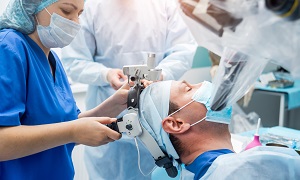
Surgery involves surgeons removing cancer cells surgically, with the help of scalpels and other tools. In children with low-risk neuroblastoma, surgery to remove the tumor is usually the only treatment needed.
Whether your doctor can remove the tumor completely, depends on the location and size of the tumor. Tumors that are attached to nearby vital organs, like the lungs or the spinal cord, might be too risky to remove.
If the neuroblastoma is intermediate or severe, surgeons generally try to remove as much of the tumor surgically, after which other treatments such as chemotherapy and radiation might be used to kill the other remaining cancer cells.
Chemotherapy

This treatment involves using chemicals to destroy cancer cells. Unfortunately, this treatment also damages healthy cells, which can include the cells in the hair follicles and in the gastrointestinal system, which can cause side effects.
Radiation therapy
Radiation therapy uses high-energy beams, such as X-rays, in order to destroy cancer cells. Children with low-risk or intermediate-risk neuroblastoma might go for this treatment. It is generally considered if surgery and chemotherapy are unsuccessful. Children having severe neuroblastoma might also need radiation therapy after chemotherapy and surgery to prevent the cancer from occurring again.
However, it is important to note that though radiation therapy affects the area where it is aimed, some healthy cells may be damaged by the radiation as well.
Immunotherapy
Immunotherapy is a treatment method that uses drugs that work by signaling your body’s immune system to fight cancer cells.
Bone marrow transplant
Children suffering from severe neuroblastoma might need to receive a transplant using stem cells collected from bone marrow
Before the bone marrow transplant, which is also known as stem cell transplant, the child will need to undergo a procedure that filters and collects stem cells from his/her blood. The stem cells are stored for later use. Then high doses of chemotherapy are administered to kill any remaining cancer cells in the body. The child’s stem cells are then injected into your body, where they are now able to form new, healthy blood cells.
Complications
Neuroblastoma can lead to the following complications:
Spread of cancer – Neuroblastoma can spread or metastasize to different parts of the body, such as the lymph nodes, liver, bone marrow, skin, and bones.
Spinal Cord Compression – Tumors can grow and press on the spinal cord, which can cause spinal cord compression, which may further lead to pain or even paralysis.

